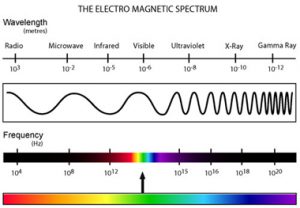Infrared Thermography (IR)

Infrared Thermography is the use of an infrared imaging and measurement camera to “see” and “measure” thermal energy emitted from an object. Thermal, or infrared energy, is light that is not visible because its wavelength is too long to be detected by the human eye; it’s the part of the electromagnetic spectrum that we perceive as heat. Unlike visible light, in the infrared world, everything with a temperature above absolute zero emits heat. Even very cold objects, like ice cubes, emit infrared.
How does it work?
Infrared Imaging

The higher the object’s temperature, the greater the IR radiation emitted. Infrared allows us to see what our eyes cannot. Infrared thermography cameras produce images of invisible infrared or “heat” radiation and provide precise non-contact temperature measurement capabilities. Nearly everything gets hot before it fails, making infrared cameras extremely cost-effective, valuable diagnostic tools in many diverse applications. And as industry strives to improve manufacturing efficiencies, manage energy, improve product quality, and enhance worker safety, new applications for infrared cameras continually emerge.
Infrared (IR) application in the Construction Industry
One of commonly known usage of the IR camera is the mapping of radiant heating tubes. This technology can provide an accurate image of the radiant tubes location in the concrete slab prior to drilling, cutting or coring.
Although the use of Infrared (IR) camera can quickly map the location of the radiant heating pipes in the concrete slab, it is often utilize with Ground Penetrating Radar (GPR) to determine the depth of the radiant heating tubes prior to drilling into the concrete slab. These two non-destructive techniques compliment each other for a safer practice when drilling, cutting or coring is performed.


